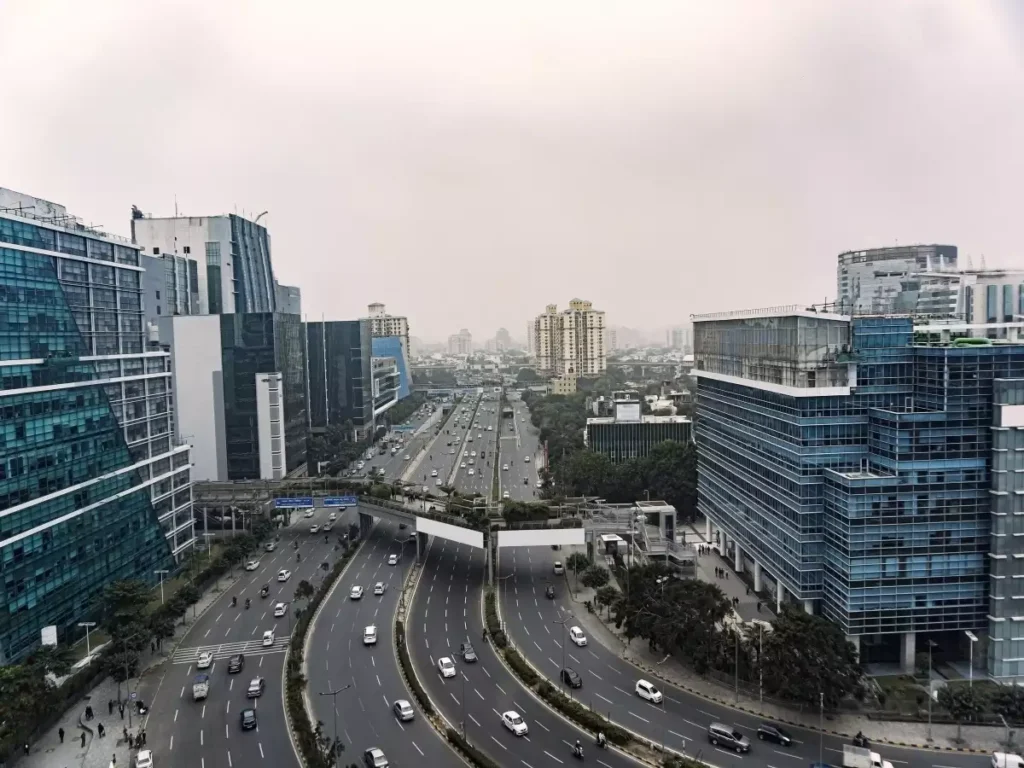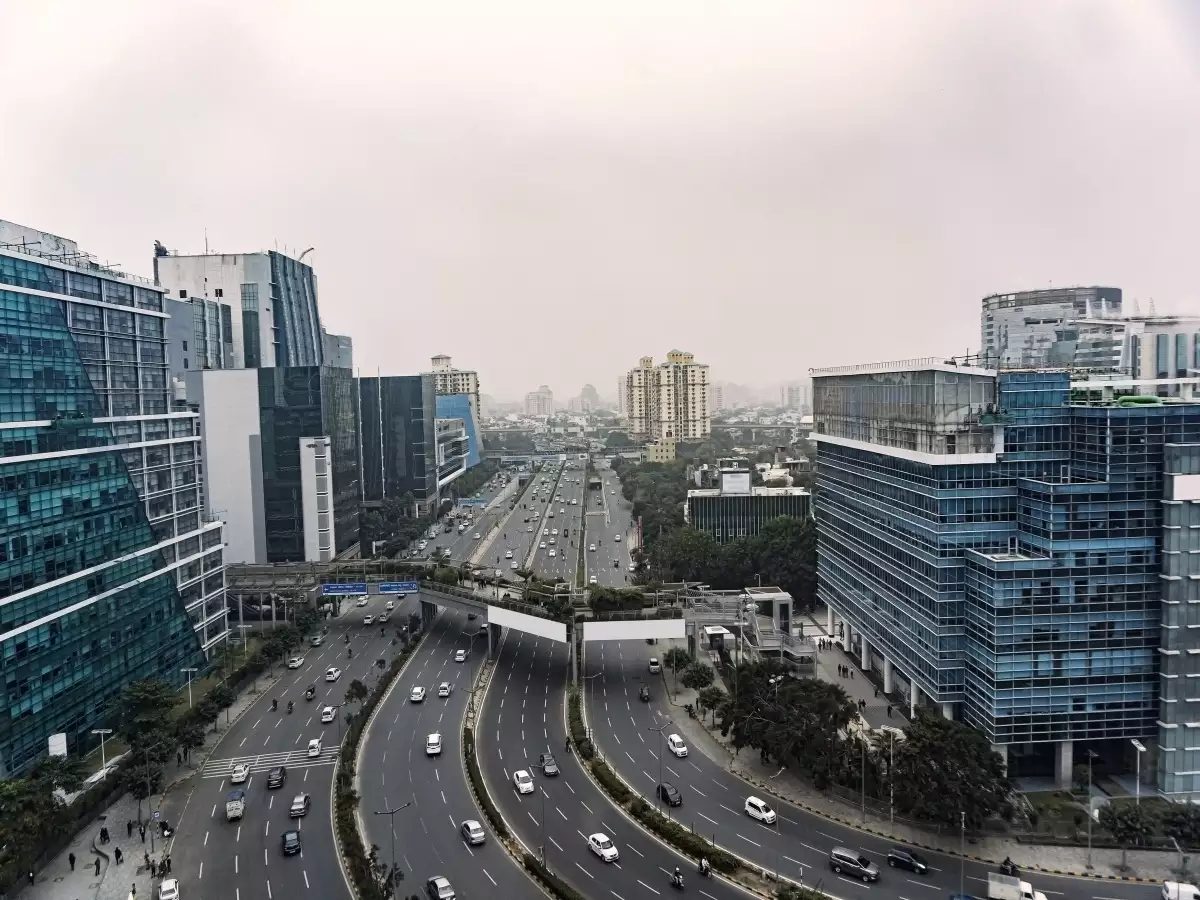
Gurugram, a bustling city on the outskirts of Delhi, has long grappled with severe traffic congestion and mobility challenges. In a bold move to address these issues, the city has embarked on a courageous initiative for traffic revitalization and improved mobility. This comprehensive plan, known as “Steering Transformation,” aims to transform the city’s traffic landscape, making it more sustainable, efficient, and conducive to the well-being of its residents. This article explores the key facets of this initiative, delving into the strategies, challenges, and potential outcomes that Gurugram envisions in its pursuit of a revamped urban mobility experience.
Historical Context:
To understand the urgency of Gurugram’s traffic transformation initiative, it is essential to examine the historical context of the city’s growth. Once a quiet suburb, Gurugram has experienced explosive urbanization, fueled by rapid industrialization, corporate expansion, and a burgeoning population. This unprecedented growth has led to a surge in vehicular traffic, transforming the city’s roads into a labyrinth of congestion, pollution, and safety hazards. Recognizing the need for intervention, Gurugram authorities have taken a proactive stance with the Steering Transformation initiative.
Key Objectives:
The primary objectives of Steering Transformation revolve around creating a holistic and sustainable mobility ecosystem. These objectives include:
1. Reducing Traffic Congestion:
– Implementation of intelligent traffic management systems.
– Expansion and optimization of road infrastructure.
– Promotion of alternative transportation modes like cycling and walking.
2. Enhancing Public Transportation:
– Upgrading and expanding the public transportation network.
– Integration of smart technologies for real-time tracking and scheduling.
– Encouraging the use of public transport through incentives and awareness campaigns.
3. Promoting Sustainable Practices:
– Introduction of eco-friendly transport options such as electric vehicles.
– Development of dedicated lanes for green mobility.
– Implementation of policies to reduce carbon emissions and promote environmental sustainability.
4. Improving Last-Mile Connectivity:
– Fostering connectivity between different modes of transport.
– Implementation of micro-mobility solutions like bike-sharing and e-scooters for short-distance travel.
– Integration of technology to facilitate seamless transitions between modes.
5. Ensuring Safety and Accessibility:
– Implementation of measures to enhance road safety.
– Construction of pedestrian-friendly infrastructure.
– Accessibility improvements for differently-abled individuals.
Strategies and Implementation:
The successful execution of Steering Transformation relies on a multi-faceted approach involving strategic planning, technological integration, and community engagement.
1. Technology Integration:
– Adoption of smart traffic management systems, including AI-based traffic signal optimization.
– Implementation of real-time tracking and predictive analytics for public transportation.
– Utilization of IoT (Internet of Things) devices for monitoring and managing traffic flow.
2. Infrastructure Development:
– Expansion and refurbishment of road networks to accommodate increased traffic.
– Construction of dedicated lanes for buses, cyclists, and pedestrians.
– Deployment of smart parking solutions to reduce on-road congestion.
3. Public Awareness and Participation:
– Community outreach programs to educate residents about the benefits of sustainable mobility.
– Incentive programs for businesses promoting green commuting among employees.
– Collaboration with educational institutions to instill traffic awareness from a young age.
Challenges and Mitigation:
The journey towards traffic revitalization and improved mobility in Gurugram is not without challenges. These challenges include:
1. Resistance to Change:
– Addressing public skepticism and resistance to adopting new transportation modes.
– Communicating the long-term benefits of the initiative to gain community support.
2. Financial Constraints:
– Allocating and managing funds for extensive infrastructure development.
– Exploring public-private partnerships to alleviate financial burdens.
3. Coordination with Stakeholders:
– Ensuring collaboration and coordination among various government agencies, private entities, and community groups.
– Establishing effective communication channels to address concerns and feedback from stakeholders.
4. Technological Implementation Hurdles:
– Overcoming potential technical glitches during the integration of smart traffic management systems.
– Continuous monitoring and updating of technology to keep up with evolving needs.
Outcomes and Future Prospects:
The successful implementation of Steering Transformation promises a host of positive outcomes for Gurugram and its residents.
1. Reduced Traffic Congestion:
– Streamlined traffic flow leading to reduced commute times.
– Mitigation of air pollution and improvement of overall air quality.
2. Enhanced Public Transportation:
– Increased ridership on public transport, reducing the reliance on private vehicles.
– Improved connectivity, making it easier for residents to navigate the city.
3. Sustainable Mobility Practices:
– Adoption of eco-friendly transportation options leading to a decrease in carbon emissions.
– Positioning Gurugram as a model for sustainable urban mobility practices.
4. Economic and Social Benefits:
– Boost to the local economy through job creation in the transportation sector.
– Improved quality of life for residents, fostering a healthier and more vibrant community.
Conclusion:
Gurugram’s Steering Transformation initiative represents a courageous and forward-thinking approach to tackling the complex challenges of urban mobility. By adopting a multi-dimensional strategy that encompasses technology, infrastructure, public engagement, and sustainability, the city aspires to redefine its traffic landscape. As the initiative unfolds, it will be crucial to monitor its progress, address emerging challenges, and celebrate the positive changes it brings to Gurugram’s residents and visitors alike. The success of Steering Transformation could set a precedent for other urban centers grappling with similar mobility issues, inspiring a nationwide shift towards more sustainable and efficient transportation systems.

